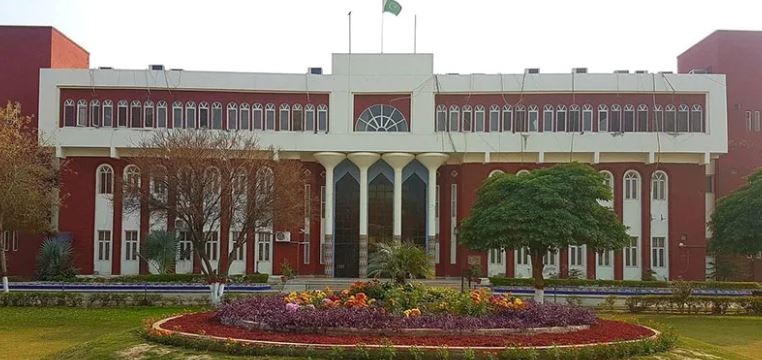
Common mistakes that CSS aspirants can do
CSS is regarded as one of Pakistan’s most difficult exams. There is also a widespread belief that CSS examinations are difficult. People who are well prepared and eager to acquire good grades, on the other hand, can easily get good grades.
Every year, a large number of students participate, but only a small percentage of them pass the tests. Graduation or a diploma equal to graduation is required to take this exam. After you’ve finished your BA, you can move on to CSS. If you have a BA, you are qualified for CSS. CSS needs 14 years of schooling to be eligible. CSS tests are only open to people between the ages of 21 and 30.
CAN YOU PASS CSS ON THE FIRST ATTEMPT?
You may Also Read: Packages 2022 Updated
Yes, you can pass CSS examinations on your first go if you read the article completely and focus on the common errors and strive to correct them.
Before taking the CSS exam, you must have a well-thought-out and strategic clear plan. Students will be able to pass the exam on their first attempt. Begin studying at least two or three years ahead of time to ensure that you
have a strong grasp of the material that will be covered in the CSS exams
Passing marks for CSS:
The qualifying compulsory paper requires a score of 40%, whereas the optional exam requires a score of 33%. Candidates who pass the written test will be shortlisted for the medical, psychological, and Viva-voce sections of the exam. To pass this exam, you must get at least 600 points. However, if you achieve roughly 650 points on the written exam and 180 points out of 300 on the interview, you will be assigned. However, different provinces have different quotas.
17 common errors that CSS aspirants can do:
1. For preparation study 8-10 hours a day and sleep 7 hours every day to maintain your physical health.
- Writing practice is very important and in C.S.S exams, there are no lines in the answer sheet and the pages are plain white, so you must do writing practice on a white plain sheet to manage the balance on your lines in your answer sheet.
- The quantity has no importance but qualities are the basic key to success in answering the question in the exams because in C.S.S. and P.M.S exams questions are of an analytical type and answers are needed in the form of arguments, comments, and conclusions in your own words.4. In every paper there are 20 marks for MCQs so prepare well for MCQs because 35 are passing marks in every paper and the marks you earn from MCQs play a vital role in it.5. Everyday science paper is very easy.20 marks for MCQs and 80 marks for short questions. Everyday science paper includes (biology, physics, chemistry, environmental science, I. T, math analytical reasoning, and general science). physics, biology, and chemistry are based on the F.S.C standard.6. Islamiyat can be given both in Urdu and English. But Islamiyat paper is based on analytical study and general knowledge about Islam. So, prepare all the topics which are related to Islam and the Islamic world in past, present, and future and problems of the Islamic world.
7. For the current affairs paper there is no need to buy any books. All the topics can be covered through the internet and newspapers’ magazines, foreign affairs, etc.
- Only blue, Black pen, and Pencil is allowed in the examination hall and strict instruction are given on the 1st page of the answer sheet about using colored pens.9. Mobiles are not allowed in the examination hall and even if you bring them, your mobile is taken and kept locked in a cupboard.10. Original I.D card and original roll number slip are checked from time to time during exams, so it’s better to bring them in every paper.11. Both MCQs sheet and answer sheet is given at the same time, so it’s better to do MCQs quickly to save time for the last question, which you will attempt at the end of the paper.
- In an English essay paper always make a rough outline on page 25 of your answer sheet and when you are done then make a fair copy of it on the 1st page of the answer sheet.13. Page numbers 24 and 25 in your answer sheet can be used for rough work; instruction about rough work is given on 1st page of the answer sheet. After doing rough work on 24 and 25 pages, cross them with a black pen.14. Date sheet is very tough, no holidays between papers, continuous paper on an everyday basis, two papers a day (9-12a.m and 2-5p.m), and 6 hours of paper giving every day. All 12 papers are taken in just 7-8 days. Do bring sweets with you to maintain your sugar level during the paper; especially the second paper (2-5p.m) needs lots of sweets because the sugar level is down in the evening time. And your brain and fingers won’t work properly due to a shortage of sugar levels in your body.
15. During preparation make outlines of important headings and points of every topic because these outlines will help you a lot in revision during a short period which you get between papers due to tough date sheet.
16. If you have plans for joining the academy then don’t waste your time and money on sub-standard academies, just go for the best in the business.
17. General knowledge papers (everyday science, Pakistan affairs, and current affairs) are based on collective marks system. You need 120 marks in total to pass these three papers collectively. (e.g. you got 20 marks in everyday science, 50 marks in Pak-affairs and 50 marks in current affairs, so in total its 120 marks, so you have passed collectively all the general knowledge section on exams, your everyday science paper is considered passed based on collective marks systematic.




